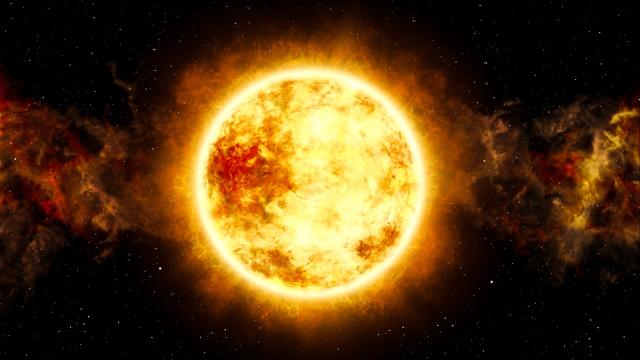A recently discovered star, 30 times larger than the Sun, reveals an unusual chemical composition.
Newly Found Star J0524-0336 Has Unusually High Lithium Levels, Posing Major Questions for Astronomers
Scientists have discovered a star named J0524-0336 which is thirty thousand light years away from the earth; it is thirty times bigger than the sun and consists of one hundred thousand times more lithium than the sun. This over abundance of lithium is rather a puzzle for current theories of stellar evolution as stars over time convert lighter elements into heavier ones through nuclear fusion. High lithium content could be of some undiscovered phase of evolution or process akin to this wherein lithium is accumulated or ablated from a lithium-rich planet or nearby star. There are future observations for J0524-0336 to identify what is causing these fluctuations: stellar interactions or internal processes and or new process yet to be discovered by astrophysicist.
Here is your chance to share your general opinion about this cosmic find so let us hear from you in the comments section.
A born star which is 30 times bigger than the sun has been discovered by astronomers and this could drastically alter some of the theories that are currently held by society about stars and how they evolve. Specially named J0524-0336 and at a distance of about 30 000 light years from Earth, this star is distinguished by the increased concentration of lithium account in comparison with the Sun or other stars of the same age.
This discovery presents a contradiction to our conventional knowledge on fusion reactions that take place in stars and how the elements are synthesized in the process since lithium should reduce and produce carbon and oxygen and other heavier elements.
Besides a high concentration of lithium, J0524-0336 is characterized by a low metallicity, as is seen Fig 5b.
The cluster J0524-0336 was identified by astrophysicists when they were looking for older stars in the Milky Way. Star’s age puts it into the category of what is called evolved stars, this, in combination with the fact that the star is in the phase of its evolution where it is starting to expand in size which leads to its increased luminosity.
After that, spectroscopy was used to determine the element present in the star with the discovery that hydrogen was the most abundant. Since light emitted by a star depends on its composition and relative proportions of the elements in it, spectroscopy helps scientists to define a star’s composition by analyzing its light.
“We determined that the early Universe progenitor of J0524-0336 is 100,000 times more abundant in lithium than the current Sun,” explained the study’s main researcher Rana Ezzeddine from the University of Florida. “It is a problem in the existing standards of how stars and their life cycles and this may a new method that stars can produce or preserve lithium.”
An unknown stage in stellar evolution — or something else?
The production techniques can be explained by several theories created by the team in an effort to define why J0524-0336 has an abnormal chemical configuration. Another can be explained by the presence of the fact that the star at the moment can pass through some previously unknown stage of stellar development. A second hypothesis is that this was caused by the star enveloping a surrounding planet or a lithium replenished star since the main star’s lithium content is high. If this absorption took place recently then the quasar J0524-0336 could not have compiled enough pressures and temperature to fuse the lithium into heavier elements.
Ezzeddine assumes that due to extremely high lithium richness in J0524-0336, both these above suggested factors may be potential causes.
However, more observation is required in order to ascertain which of the suggested mechanisms is the root of this phenomenon, or if it is both of them, or if the reason is something else all together.
Ezzeddine and her team intend to keep observing J0524-0336, in order to investigate if it undergoes any compositional alteration and, if so, in what manner.
“If we observe dust accumulation in the star’s circumstellar disk or the ring of matter that is being ejected from the star, it would indicate a mass losing event like a star interaction, Ezzeddine said. “If we do not see such a disk, then this could be telling us the lithium enrichment is from some internal process in the star that we have not yet identified. ”
The team’s research is published on the research repository arXiv and is set to be featured in The Astrophysical Journal.
Do not forget to share your opinion with us to provide you with the best posts !




0 Comments